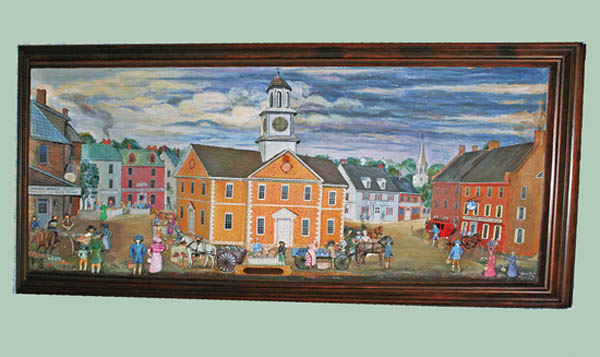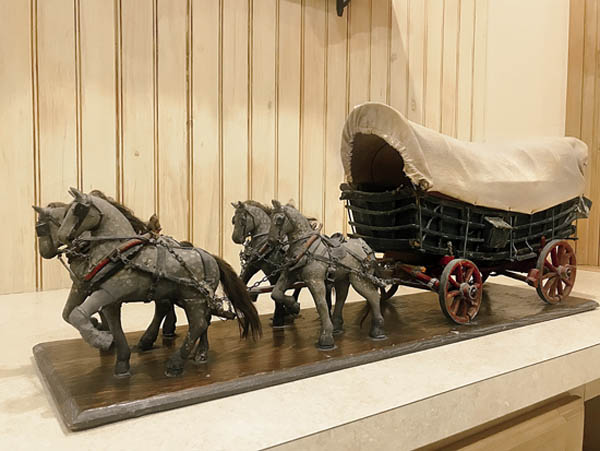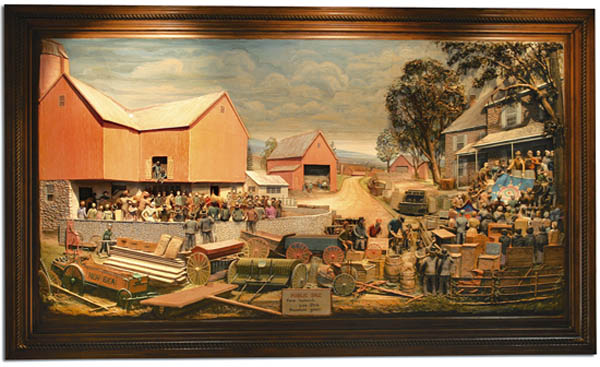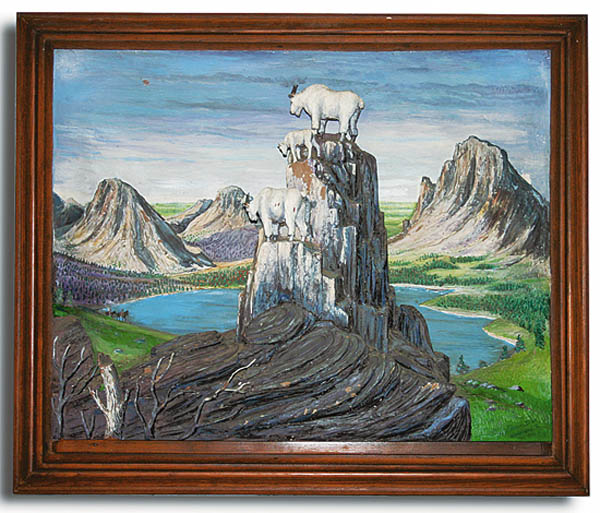Abner (1921-2010) And Aaron Zook (1921-2003)
A Brief History On Amish Identical Twin 3-D Diorama Artists
By Kevin Zook - July 31, 2020
Born in 1921, identical twins Abner and Aaron Zook were companions and competitors all their lives. Their mother Annie was an avid crafter, and she actively encouraged her sons in their creative pursuits. Growing up in a large farming family did not leave much spare cash for hobbies. Abner and Aaron had to use some creativity for supplies. Rooster tail feathers became paint brushes, and horsehair was trimmed to use as tails and manes on the horses they carved. Instead of playing outside or attending public auctions, the twins used their free time to carve and paint. They once carved a chain together that stretched around the perimeter of their bedroom ceiling. Eventually, a businessman from Lancaster took an interest in the boys, buying them proper brushes and paints. As they grew and then married, they continued creating models of things familiar to them. Conestoga wagons complete with horses and harness, sleighs, buggies, stagecoaches, McCormick reapers, and spinning wheels in bottles all came to life under their gifted hands. Both twins tried farming, but it was not a good fit for them. During that time, they continued to use their spare time to carve. During a trip to Germany in 1952, Aaron saw woodcarvings that fired his imagination. He envisioned a shadow-box type of diorama. Family lore has it that Aaron came back and made the first one. Abner did his first one in 1959 and began selling pieces in the early 1960s. Aaron continued farming longer than Abner, but he eventually began to pursue steadily making dioramas that Abner was making in the late 1960s. In the mid-1970s, Aaron was invited to set up a workshop and gallery at The Peoples Place in Intercourse, Pa. The business no longer exists. From that location, he pursued the tourist market, making many small collector plates from molds. He also produced larger one-off pieces, many of them shipped across the U.S. and internationally to both government officials and some connections in Hollywood. Meanwhile, Abner struggled to find an outlet for selling his pictures. He tried art shows as well as a paid representative/agent. Finally, an early Jewish client from New York City introduced him to her circle of friends, and he began to get orders. He placed pieces in some well-known restaurants in Lancaster County and hosted clients at his Womelsdorf, Pa., gallery. Throughout the 1970s and 1980s, he had a six-year lead time on orders. Shady Maple (East Earl, Pa.) is one restaurant where his works are displayed. Aarons technique involved more woodcarving than Abners pieces, which are more sculptural in quality. However, being twins, some techniques were certainly shared. They used twisted wires for trees, nails or lollipop sticks for fence posts, cut twine for straw and grass and auto-body filler for shaping the carvings. Although most pieces began with a rough sketch, usually the brothers could simply picture the finished piece in their heads. Aaron had a wide variety of sizes, but many of their larger pieces were approximately 5 feet wide and 3 feet high. Both passionately depicted the country life of the Amish. They produced countless scenes of country auctions, schoolhouses, quiltings, barn raisings, threshings, plowing, picnics, covered bridges and church services in the barn. Drawing on his own experience, Abner modeled twin boys on many of his pieces. In addition to these familiar scenes, the brothers took commissions for custom pieces taken from photos. Abner in particular loved to depict Conestoga wagons. The brothers most productive years were roughly 1970 through 1990. In the early 1990s, Abner began to slow down and eventually needed heart surgery. For the rest of the decade, he struggled to produce good-quality pieces. When customers began rejecting pieces, he grew very discouraged. His last piece was produced in 2002. Aaron passed away in 2003, and Abner in 2010. Between the two, they created well over 1,000 three-diamensional dioramas in their lifetimes. The author is Abners grandson. He resides in Massachusetts. Collectors are welcome to contact him at kevinzook@abcmailbox.net. He is involved in a multi-year project to locate and document as many of Abners pieces as possible. He also has access to Abners papers and can research original sales data on many pieces. Please note, the author is not a collector, seller or agent of this work, and the intent of this article was not to provide market-oriented information.










SHARE
PRINT